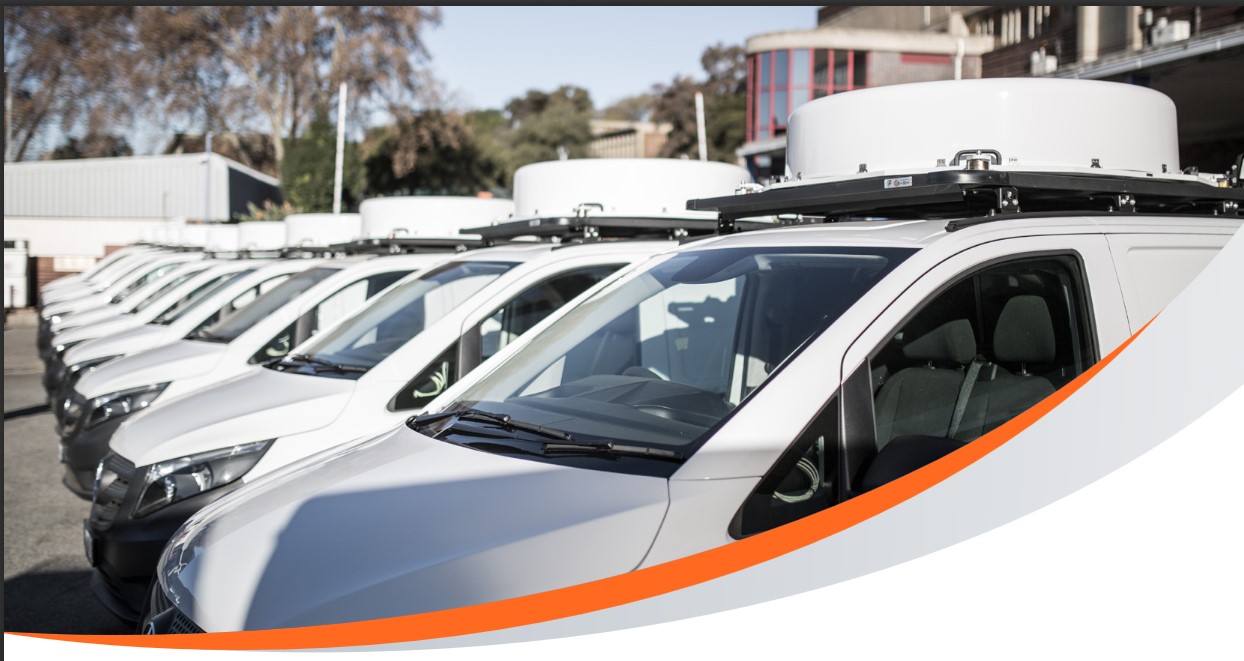Case Study: Managing an Outside Broadcast Fleet
Johannesburg, South Africa, October 7, 2020--The South African Broadcasting Corporation (SABC) is South Africa’s public media provider, operating five national television and nineteen radio channels, as well as a comprehensive range of websites. SABCs main headquarters and studios are located in Johannesburg. They now operate a fleet of 10 satellite communication vehicles which are able to transmit HD video streams while driving. Based on the statement of one of the senior technicians of SABC, the main advantage of the vehicles is not the ability of transmitting videos while driving; it is the always on capability of the vans which makes the difference.
It’s not just a connection . . .
The system which SABC is operating is not just a connection it is a fully integrated solution where all parts are tailored to perfectly fit to each other.
Whenever a van leaves its home base it joins the SABC network. The people in the van can login to the SABC internal network, check their
 |
| SABC's fleet of Outside Broadcast vans |
mails or make phone calls to the internal telephone network. Whereas other systems provide this functionality by routing all traffic through the internet, with all drawbacks in terms of security, the NDSATCOM SKYWAN system delivers all data packages directly to the rooftop of SABC and therewith into the internal network.
SABC not only decided to use modern satellite communication technology they also decided to use the NDSATCOM Media Fleet Manager System to let their fleet of traditional on the pause SNGs use the same bandwidth as the SOTM vehicles. This decision saves money for satellite bandwidth and increases efficiency in terms of internal processes what also saves money.
. . . it’s a system
The NDSATCOM Bandwidth and Fleet Management System introduced some major enhancements to daily work of the ”TV Outside Broadcast” division of SABC.
Khutso Matlala who works with TV Outside Broadcasts-SABC said: “As soon as you start the van and switch on the circuit at the back the van is on. While its leaving SABC and driving to a story. Traditional vans had to get to the venue, find the satellite, setup; that took about 30 minutes. This is connected all the time, you just get of switch on your camera and you can start shooting. Communication as well, they are on, as soon as the van is on. So you have got connectivity to the studio while you are driving so there is not setup time.”
Bandwidth Management
The MFM with its easy to use bandwidth scheduling client makes it easy to setup transmissions. By clicking source SNG and destination equipment the MFM can automatically select which capacity shall be used to setup the transmission. This avoids handling hundreds of bits of paper where capacity requests are normally tracked.
Equipment Setup
At the point in time where the transmission is short before going live all equipment needed will be configured automatically by the MFM controller environment. If a van is not connected in time, due to whatever reason, everything will be setup whenever the van connects to the network. The operators at the MCR or the van can concentrate on their daily business activities, all standard configuration topics are handled by the system automatically.
Monitoring & Control
The MFM systems not only provides helpful features for scheduling and configuration tasks it also enhances monitoring & control of the system by at the same time reducing bandwidth for these tasks dramatically. The concept of local MFM controllers talking to a central controller at the main site reduces bandwidth for M&C by up to 80%. The local controller can ask for changes every second, but will only transmit data packets over satellite if changes appear or alarms occur.
Always on Connectivity
Because of the always on capability of the vans it was the perfect choice for the SNG demand of SABCs South African regions. With this system there is no need to send a technician out to the story. A cameraman and a reporter are enough to run the vehicle. This enhances flexibility and reduces costs for hotels and accommodation on site. The technicians can stay at the central site doing their daily business only coming into play if something special needs to be prepared. And most of these things can now be setup remotely using the always on capacity.
For more information on ND SatCom go to: www.ndsatcom.com





